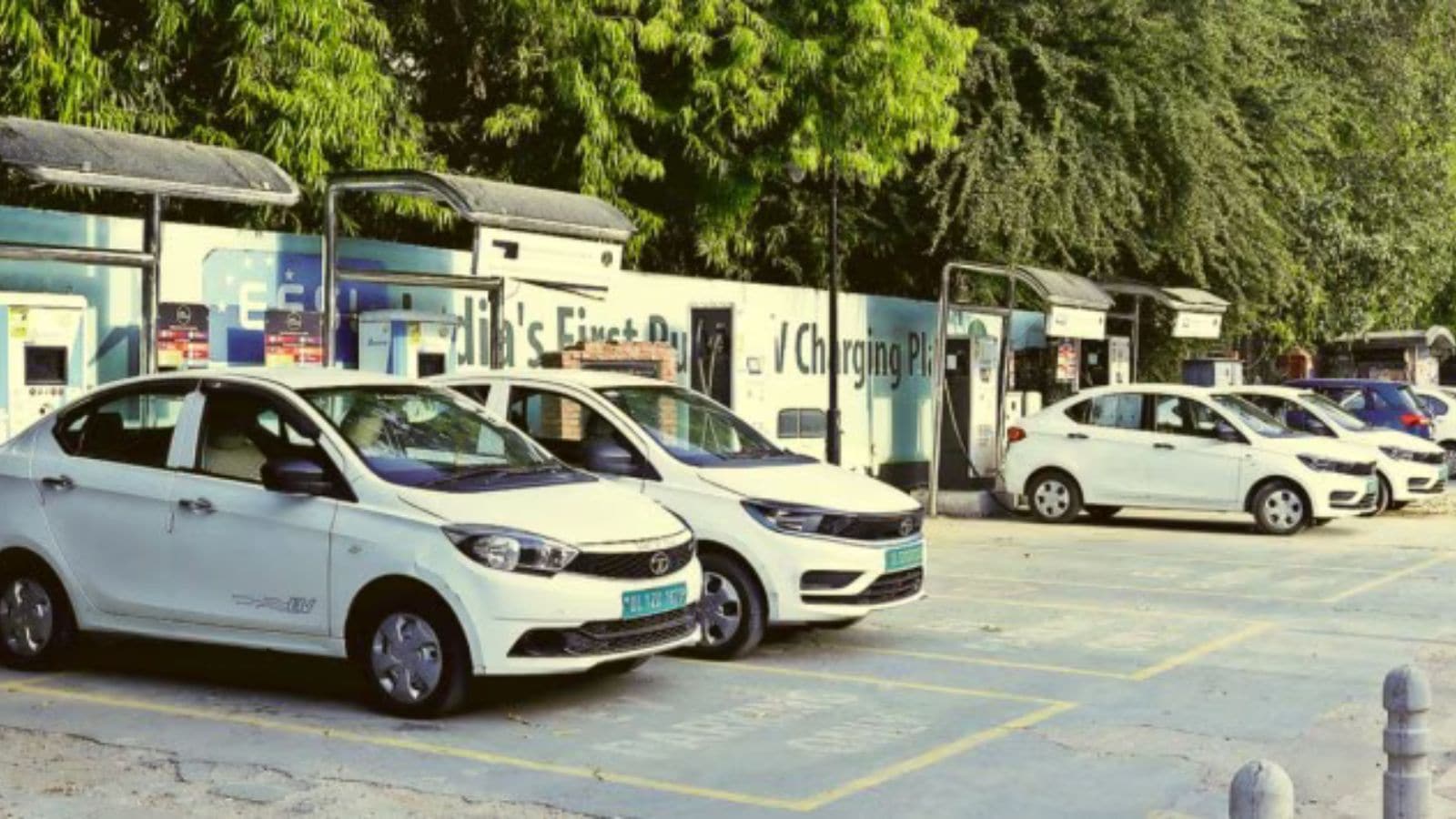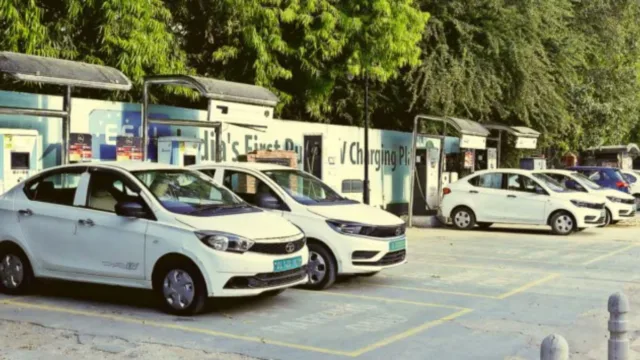
In India’s policy circles, a steadfast focus of driving vehicular electrification by largely incentivising a singular technological platform – battery electric vehicles or BEVs – at the cost of all other technologies, could be in for a change. The immediate trigger for this has come from China’s newly imposed restrictions on rare earth magnet and related materials that kicked in from April 4, which are beginning to impact automakers across the world. This includes vehicle manufacturers in India.
Beijing’s move has set off an informed discussion within top levels of the Indian government that multiple geopolitical issues need to be considered afresh while picking vehicular technologies, and whether the choice of BEVs in the eventual goal of vehicular electrification could mean playing entirely into the hands of Chinese at the cost of India’s own local ICE (internal combustion engine) auto value chain and ancillary ecosystem.
“The restrictions (on rare earth magnet and related materials imposed by China that kicked in from April 4) are a wake up call. In some ways, the timing is propitious. It’s akin to a person’s cocaine supply being withheld just as an addiction was building up… It’s good this has happened now. A policy rethink is now on (after Beijing’s move),” a top government official told The Indian Express.
BEV Policy Push
India’s electric mobility plan has, so far, largely focused on replacing internal combustion engines with BEVs powered by Lithium-ion (Li-ion) batteries, which was positioned as the most viable energy storage option for the future. BEVs are essentially vehicles such as the Tata Nexon EV, BYD Atto3 or Mahindra BE6 in India, or the Nissan Leaf or the Tesla Model S sold abroad, which have no internal combustion engine or fuel tank, and run on a fully electric drivetrain powered by rechargeable batteries. Currently, government policy overtly favours BEVs, which are taxed at 5 per cent, with most other categories facing higher taxes over 43-48 per cent. The Centre has also been pursuing its target of EV30@2030 that aims to ensure that 30 per cent of all newly registered private cars, 40 per cent of buses, 70 per cent of commercial cars, and 80 per cent of two-wheelers and three-wheelers will be electric in less than five years. All this could all possibly see a review in the due course.
The restrictions on rare earth magnet and related materials imposed by China has led to vehicle makers, especially EV makers, staring at a potential shortage of the critical components, which raises concerns of price hikes and production delays in a nascent, cost-sensitive segment of the auto market. The Indian car industry is learnt to have initiated a conversation with the government to smoothen the process for procuring the rare earth magnets from Beijing. While the Chinese government has not imposed an outright ban on the export of rare earth magnets—a crucial element in making electric vehicles—the process has been made very difficult, which could take up a long time and pose shortage risks in the meantime. The applications have to be routed through the Ministry of Commerce (DGFT) and India’s Ministry of External Affairs, with end-use certifications being insisted upon in some cases by the Chinese side.
RE Magnets
Rare earth magnets, especially neodymium-iron-boron (NdFeB) magnets, are crucial for EV manufacturing, particularly in electric motors. They provide the strong magnetic fields needed for efficient and powerful electric motors, including traction motors that drive EVs. Rare earths are needed for making what are called permanent magnet synchronous motors, which are used extensively in EVs. These magnets also play a major role in other vehicular components like power steering systems, wiper motors, and braking systems, which impact both EVs and ICE vehicles. China has a stranglehold over these rare earth magnets.
While the availability of rare earth metals is not limited to China, it is in the efficient processing of these critical elements where Beijing has a substantial lead, which was once enjoyed by the US and Japan. In recent years, Japan has been able to restart some of its minerals’ processing industry owing to government policies, but countries like the US and India are heavily dependent on Chinese exports of these metals.
Story continues below this ad
While China restricted exports of seven heavy rare earth metals including samarium, gadolinium, terbium, dysprosium, lutetium, scandium, and yttrium, as well as rare earth magnets in May in response to the US administration’s reciprocal tariff heat, these restrictions are still to be lifted in a meaningful way. A few months ago, China had also banned exports to the US of gallium, germanium, antimony, and other key high-tech materials with potential military applications.
Chinese Stranglehold
Apart from China’s restrictions on rare earth magnets, Beijing’s virtual stranglehold in the EV battery ecosystem is yet another reason for concern here. The Indian government’s strong EV push comes amid a struggle by New Delhi to make inroads into the global lithium value chain, which too has prompted a rethink on the need to diversify the country’s dependency on Li-ion batteries in the overall EV mix. The demand for Li-ion batteries from India is projected to grow at a CAGR of over 30 per cent by volume up to 2030, translating into over 50,000 tonnes of lithium requirement for the country to manufacture only EV batteries.
But with over 90 per cent of global Li production concentrated in Chile, Argentina and Bolivia, alongside Australia and China, and other key inputs such as cobalt and nickel mined in the Congo and Indonesia, India would need to be almost entirely dependent on imports from a small pool of countries to cater to its demand. While other options to Li-ion are being explored, viability remains a key factor, especially given China’s strong influence over this value chain. China is miles ahead of everybody in battery tech, with a strong base in the entire sourcing chain, and industry leaders such as battery makers CATL and BYD and carmakers such as Nio, Li Auto and XPENG Motors all from that country.
There are some other niggling issues on the periphery too, when it comes to an overt policy preference for battery electrics. There’s the issue of upfront subsidy for EVs, for instance. The BEV experience across all markets, from Norway, to the US and China, show that the electric push works only if it is backed by state subsidies. The problem with this overt subsidisation of EVs, especially in the context of a developing nation such as India, is that much of this subsidy, especially the one offered as tax breaks for cars, ends up in the hands of the middle or upper middle class – the typical buyers of battery electric four-wheelers.
Story continues below this ad
Then there are problems with the charging network. An analysis by the World Bank suggests that investing in charging infrastructure is 4-7 times more effective in EV adoption than providing upfront EV purchase subsidies. Countries like Norway and China have seen faster EV adoption through their sustained efforts towards expanding the public charging infrastructure, while also offering purchase subsidies. India is struggling on this count.
Then there’s the argument over the electricity source. In several countries that have gone in for an EV push, much of the electricity is generated from renewables — in Norway for example, it is 99 per cent from hydroelectric power. In India, despite a concerted renewable push, the grid is still fed largely by coal-fired thermal plants. Unless the generation mix changes significantly, there would be an issue with using fossil-fuel generation to power EVs. So, theoretically, while the tailpipe emissions by cars might not be polluting the cities where they are being driven, the pollution is still happening wherever the thermal plant is running.








